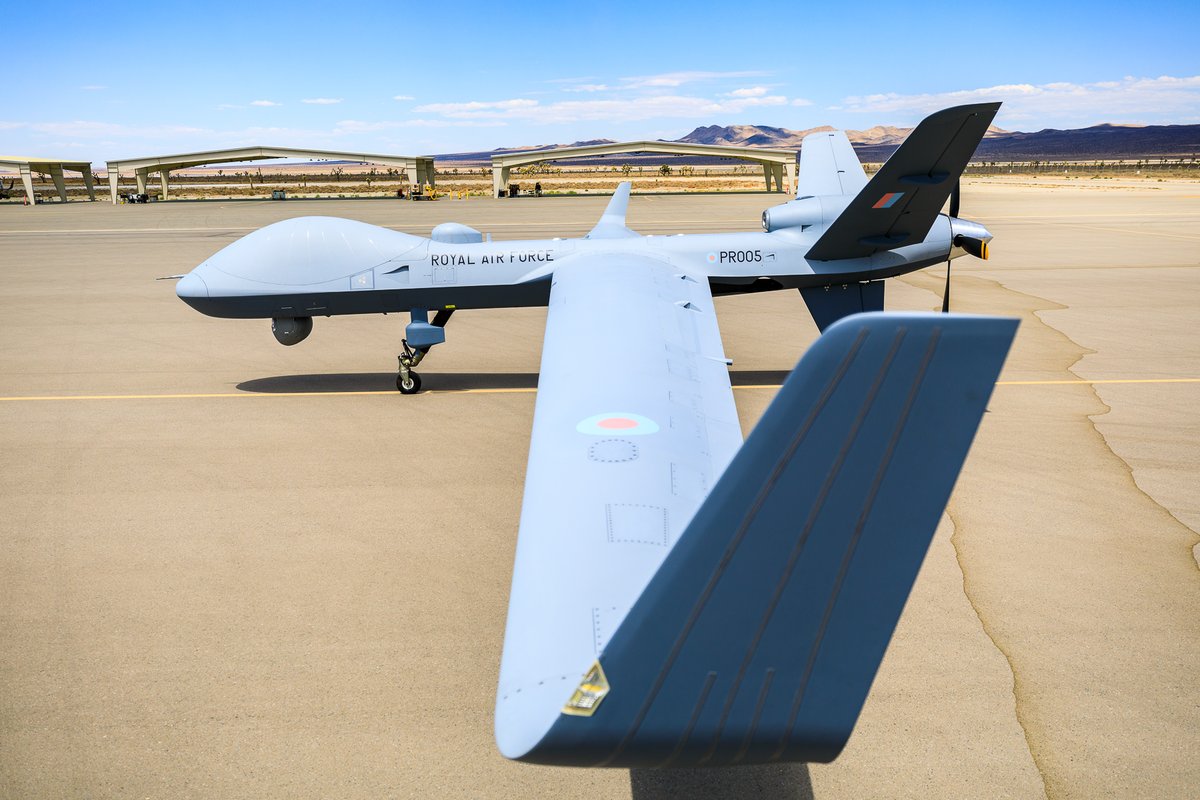


Acceptance Test Procedures (ATP) for the first Protector RG Mk1 Remotely Piloted Aircraft (RPA) system has been completed , performed jointly by UK MOD and GA-ASI , followed by the handover.
Ownership of the aircraft has now transferred to UK MOD and the aircraft will now fly with a UK Military tail number, PR005, under a UK Military Permit to Fly.
UK Royal Air Force (RAF) is the launch customer of the MQ-9B RPA system developed by General Atomics Aeronautical Systems, Inc. (GA-ASI). Protector is a specially configured model of MQ-9B, designed to meet the unique requirements of the RAF.
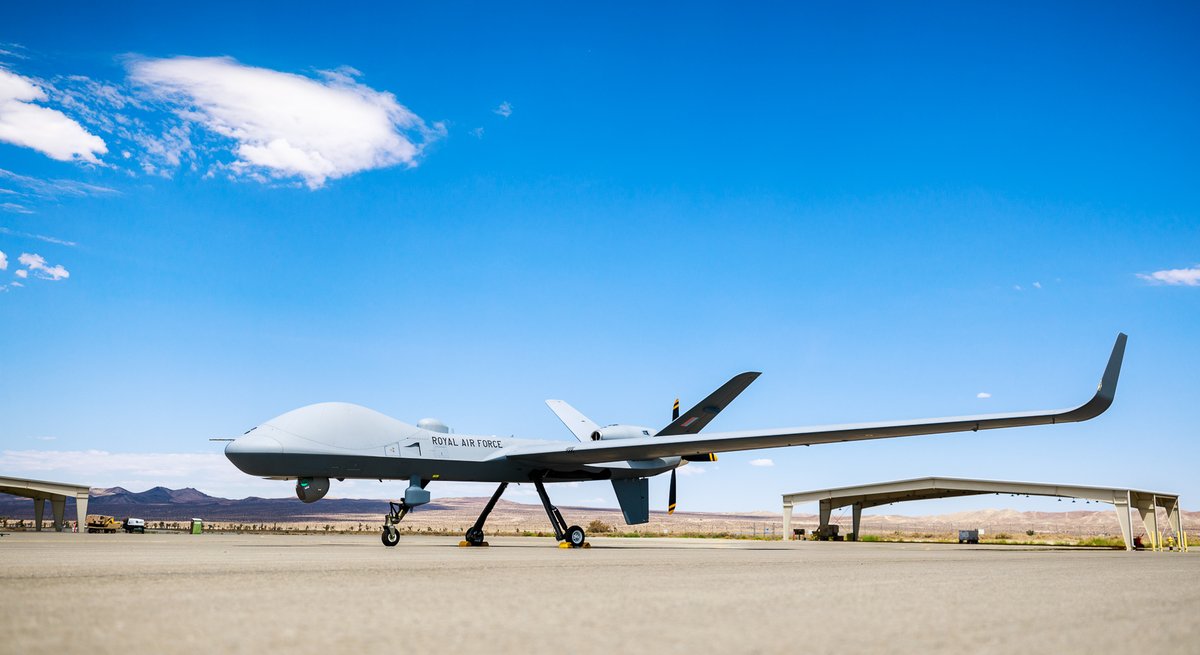
On 4 October 2015 , when the initial plan conceived , David Cameron , Prime minister of UK that time , announced that the RAF would replace its existing fleet of 10 Reapers with more than 20 of the "latest generation of RPAS", named as "Protector".
In an April 2016 document, the MoD revealed that Protector will be a version of the MQ-9B SkyGuardian, formally known as Certifiable Predator B (CPB), made to fly in European airspace, to be acquired from 2018 to 2030. In July 2018, it was announced that this aircraft will be designated Protector RG Mk 1 in RAF service, and is to be delivered in 2023.
For now ,the aircraft remains in the USA to participate in the initial training programme for the RAF, with the first delivery of Protector to the RAF in the UK planned for 2023.
The aircraft was accepted by Air Vice Marshal Simon Ellard, Director Combat Air at Defence Equipment and Support (DE&S), the procurement arm of the UK Ministry of Defence.
Air Vice-Marshal Ellard said ,
It was a great pleasure to accept the first Protector aircraft off contract on behalf of the MOD. While this aircraft will remain in USA, it will be used to train RAF personnel with UK equipment and will be placed on the UK Military Register. We now look forward to the first delivery of this highly capable aircraft type to RAF Waddington during 2023.
The typical MQ-9B aircraft is powered by a 950 horsepower (710 kW) turboprop, with a maximum speed of about 260 knots (480 km/h; 300 mph) and a cruising speed of 150–170 knots (170–200 mph; 280–310 km/h).
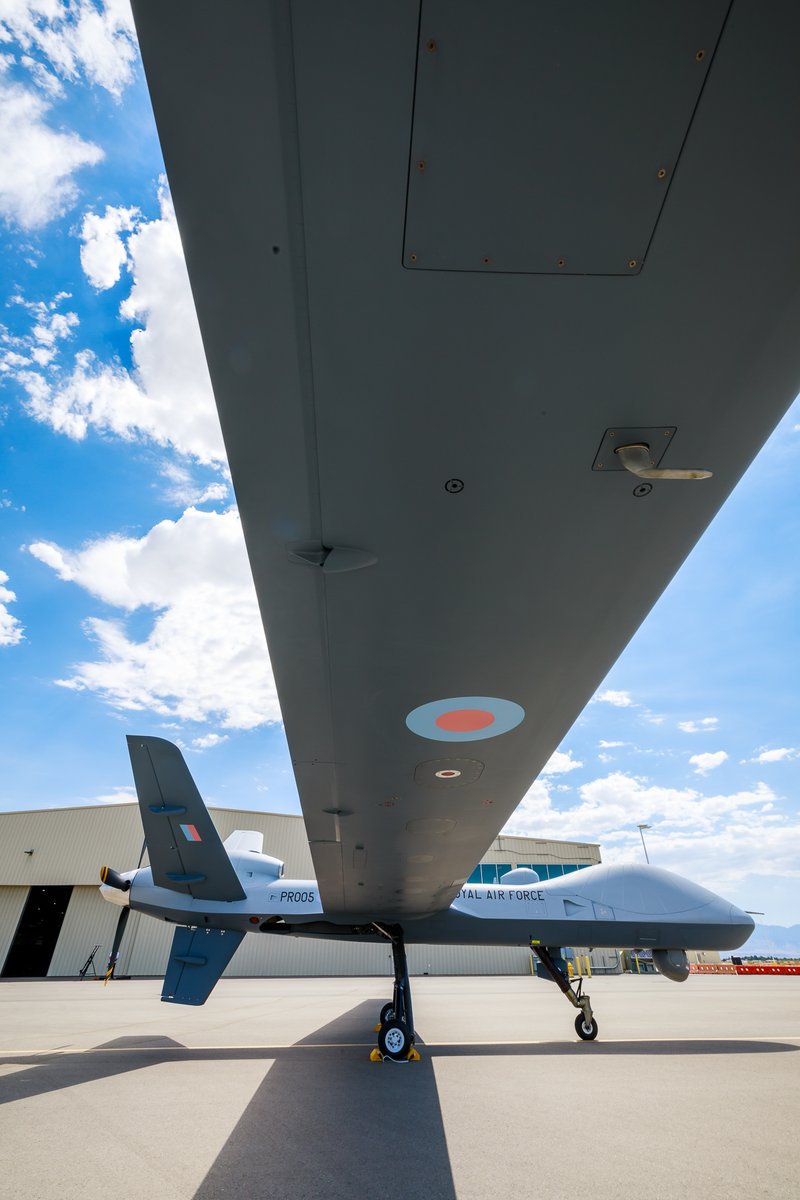
Acceptance Test Procedure was performed over the past two months at GA-ASI’s Desert Horizon flight operations facility in El Mirage, California, and included all inspections and tests performed on the hardware in operation for the aircraft and in conformance with the functional specification and technical requirements.
“This is another major milestone for MQ-9B and the Protector program,” said GA-ASI President David R. Alexander. “The Royal Air Force has been a great partner for General Atomics, and we’re thrilled to see ATP completed for this first customer aircraft.”
MQ-9B represents the next generation of RPA systems, having demonstrated airborne endurance of more than 40 hours in certain configurations, as well as a GA-ASI developed Detect and Avoid system.

Its development is the result of a company-funded effort to deliver an RPA that can meet the stringent airworthiness certification requirements of various military and civil authorities.
"Protector RG Mk1" or MQ-9B SkyGuardian®, basically a variant of the Predator® B Remotely Piloted Aircraft (RPA) series meets NATO standards (STANAG-4671), and manufacturer GA-ASI expects ,
"in cooperation with the FAA, will subsequently meet airworthiness certification standards domestically and around the world."
Designed to Perform over-the-horizon long-endurance, medium-altitude Intelligence, Surveillance and Reconnaissance (ISR) missions, the maritime variant of MQ-9B, "SeaGuardian" , can be configured with cross-domain capabilities for a vast range of maritime surveillance operations, including:
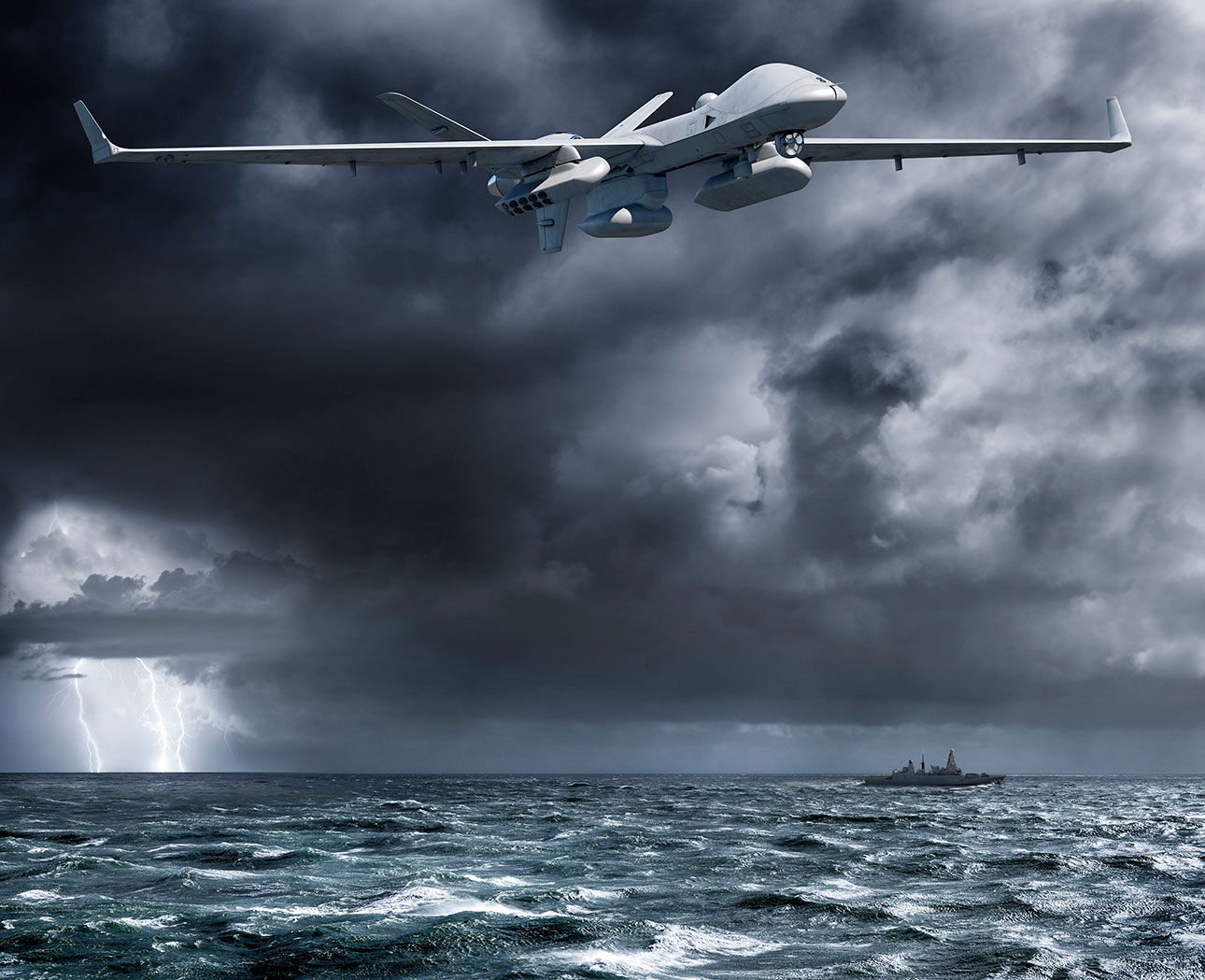
United Kingdom Royal Air Force is hopeful about the Protector and says,
To achieve full operational clearance, Protector is being assessed against stringent NATO and UK safety certification standards, meaning it could operate in civilian airspace. It is expected that Protector will achieve certification in 2024.
Protector will replace Reaper and will be deployed in wide-ranging Intelligence, Surveillance, Targeting and Reconnaissance (ISTAR) operations where its ability to fly consistently for up to 40 hours, offers the RAF vastly improved armed ISTAR capability.
It would also be available, if requested, to support civilian agencies in the UK, for example in search and rescue and disaster response missions.
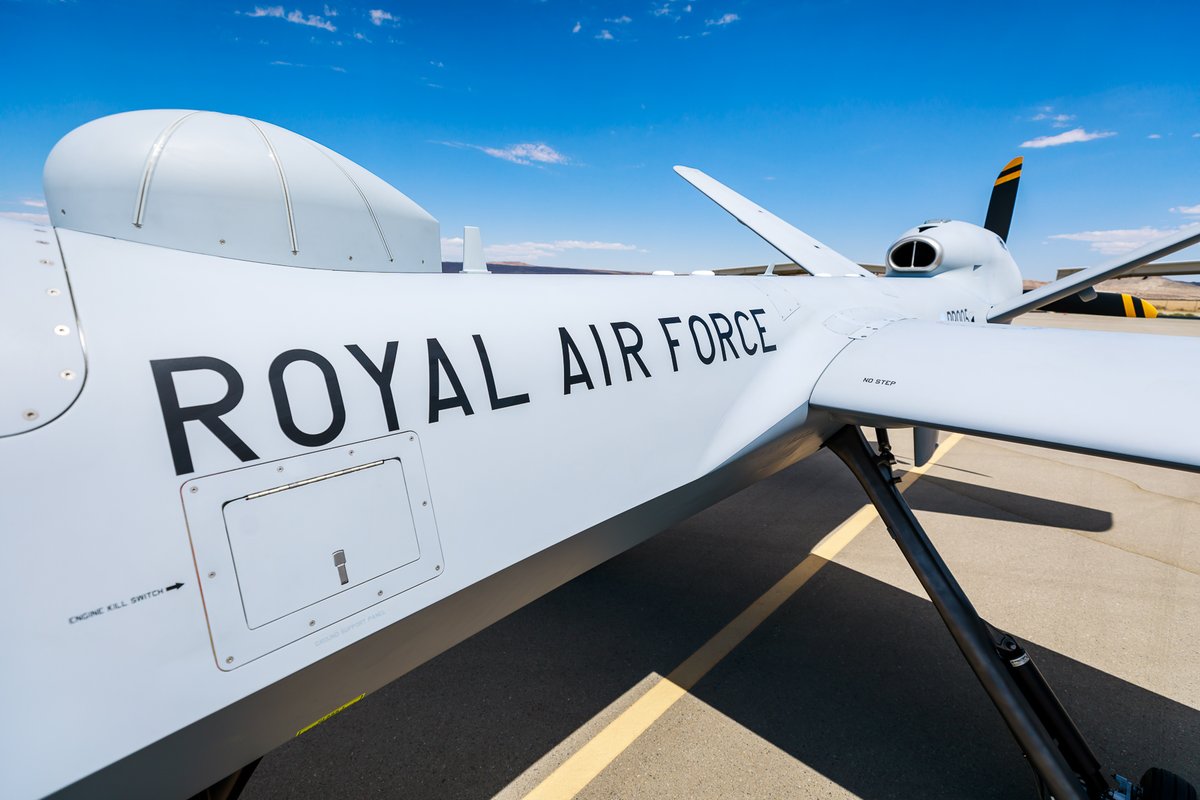
RAF Air Commodore Alex Hicks said:
“The acceptance of the first Protector aircraft is a significant and exciting milestone in the delivery of this world-class capability to the Royal Air Force. The aircraft will be used to train RAF technicians how to maintain the capability, prior to the arrival of the first aircraft in the UK next year.”
MQ-9B has garnered significant interest from customers throughout the world. After the UK Ministry of Defence selected MQ-9B SkyGuardian® for its Protector program, the Belgian Ministry of Defense signed a contract for SkyGuardian. Later this year, the Japan Coast Guard will begin operations using the MQ-9B in the SeaGuardian® configuration.
Source : Royal Air Force (UK MOD) and GA-ASI .
